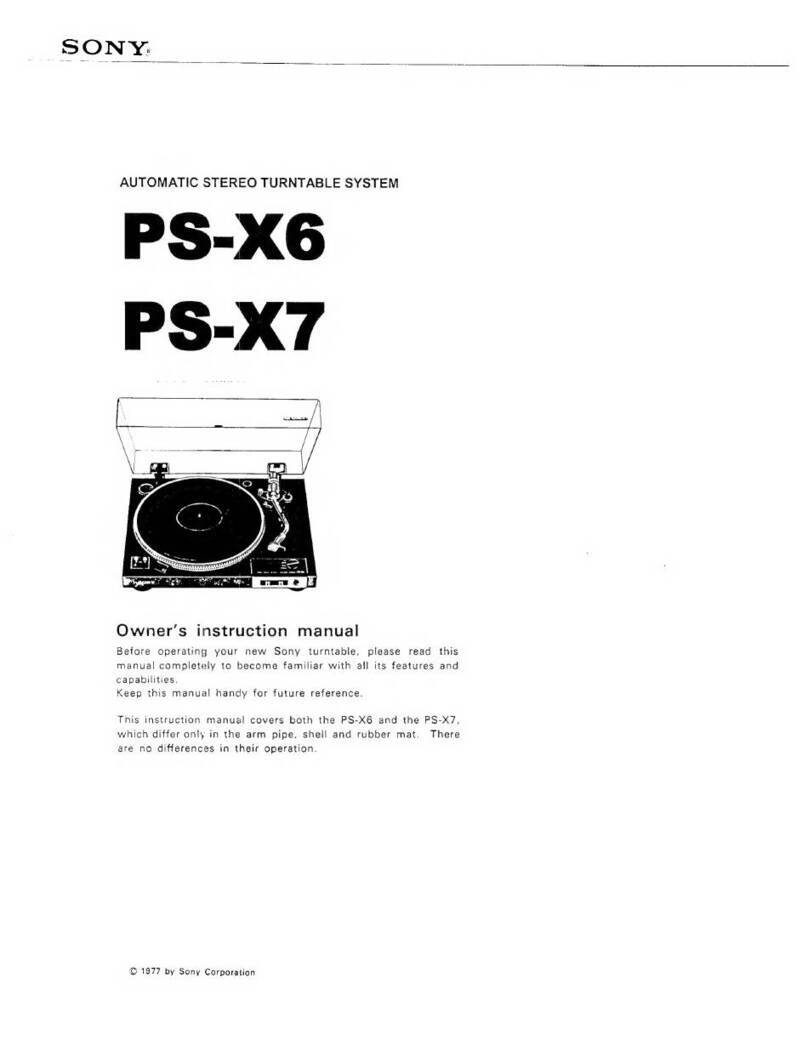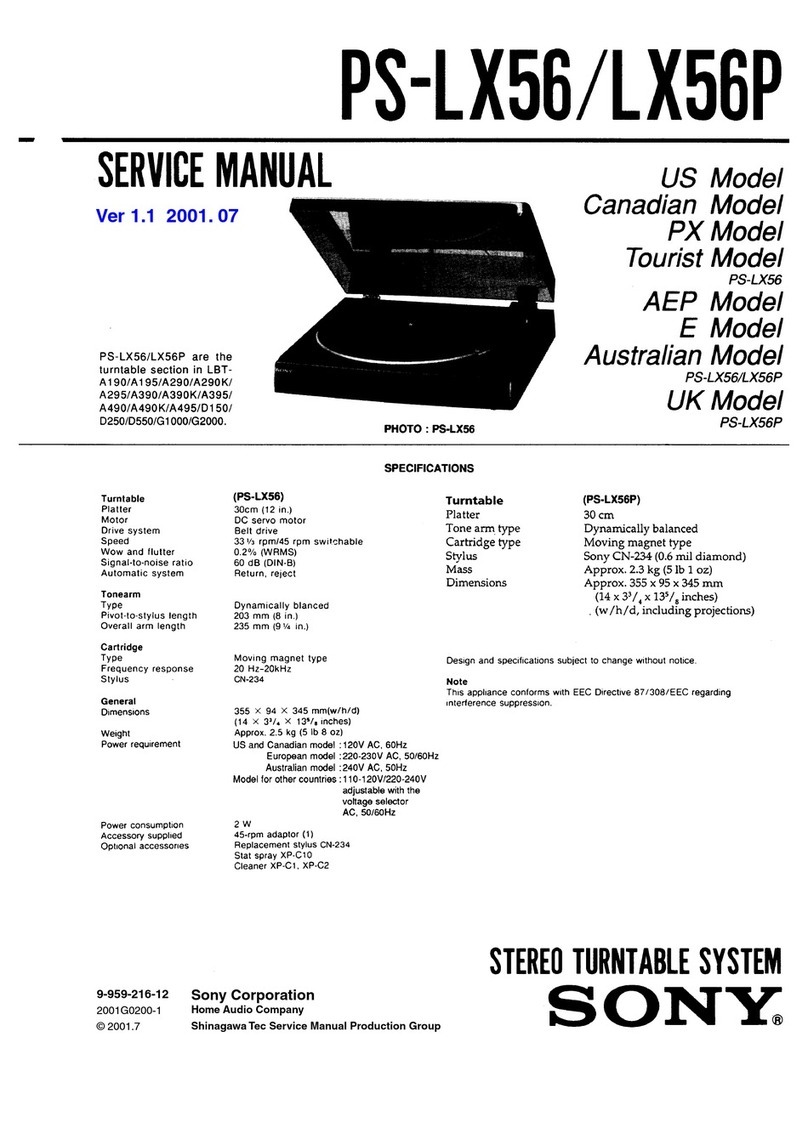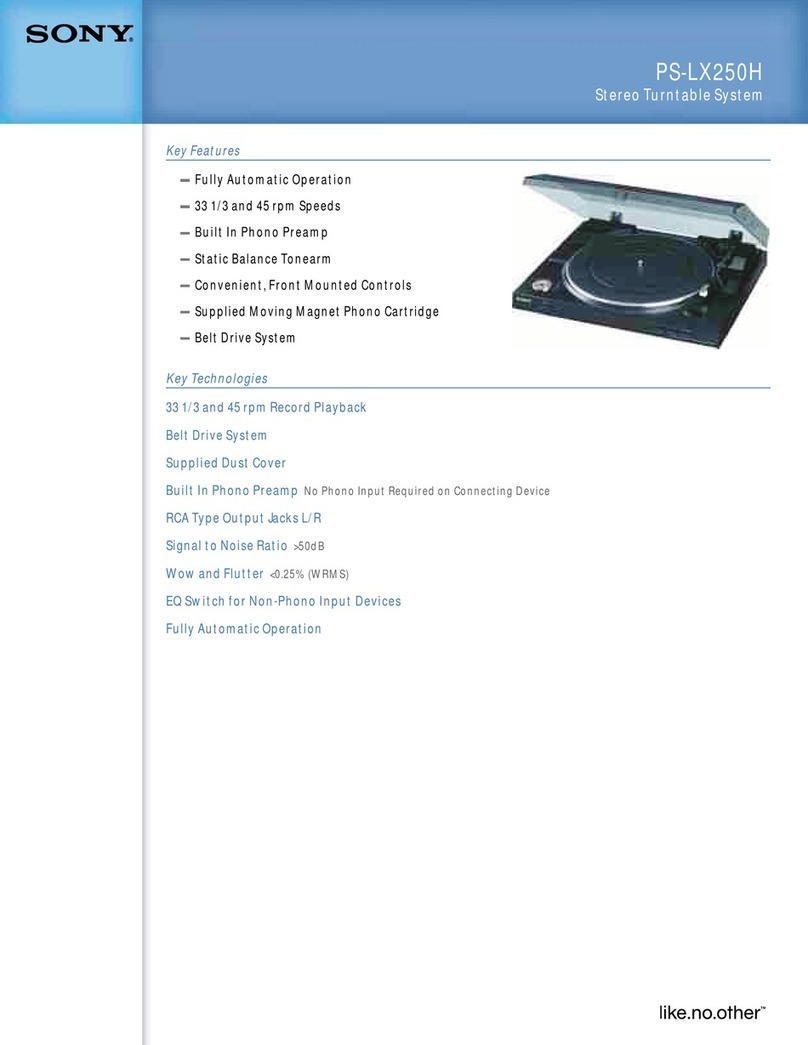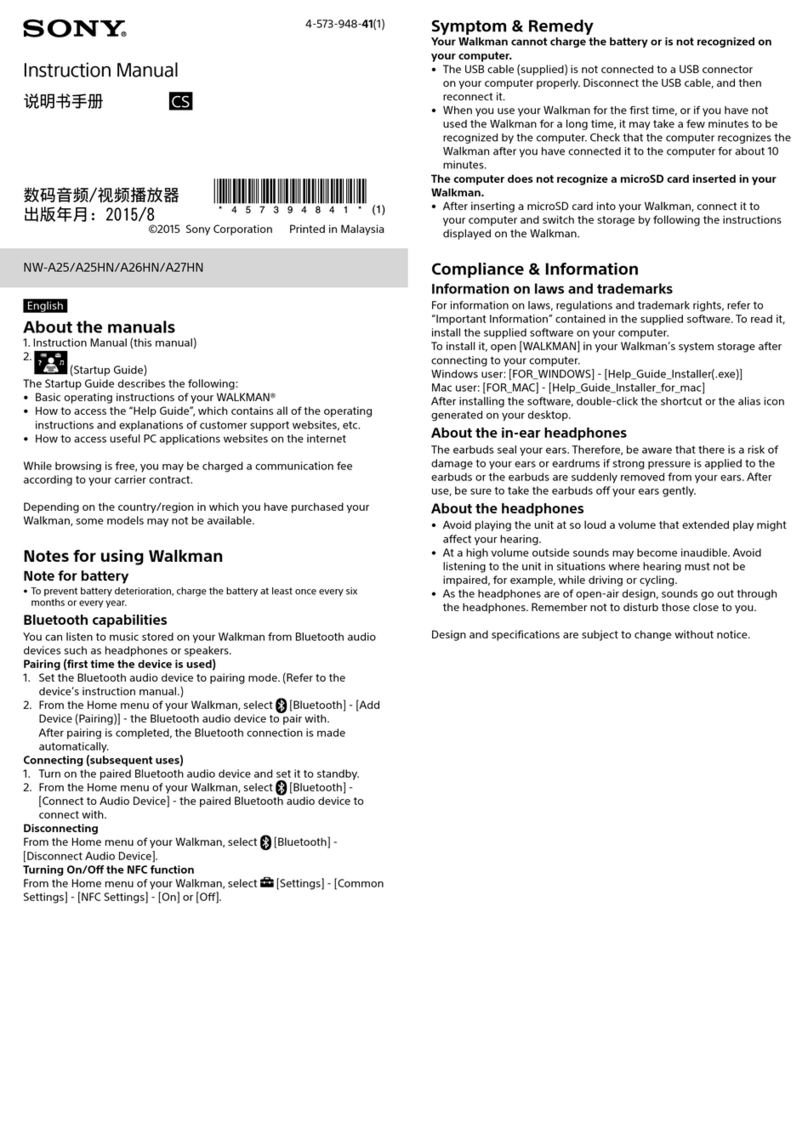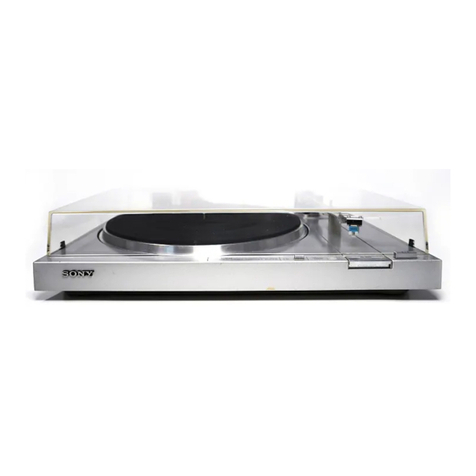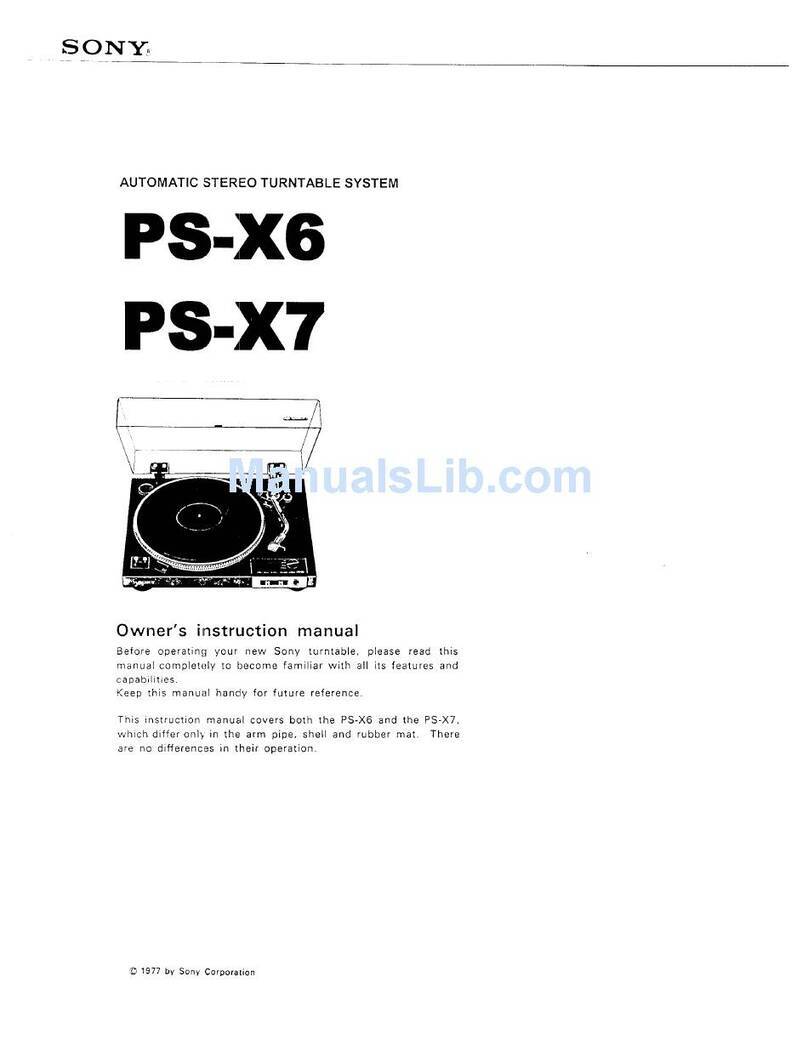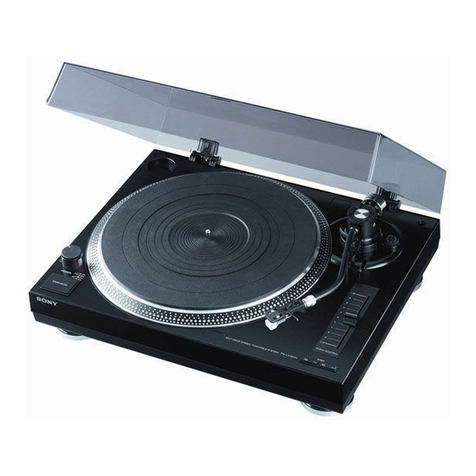Sony PS-X50 Setup guide
Other Sony Turntable manuals

Sony
Sony HAP-Z1ES User manual

Sony
Sony PS-FL7II - Stereo Turntable User manual
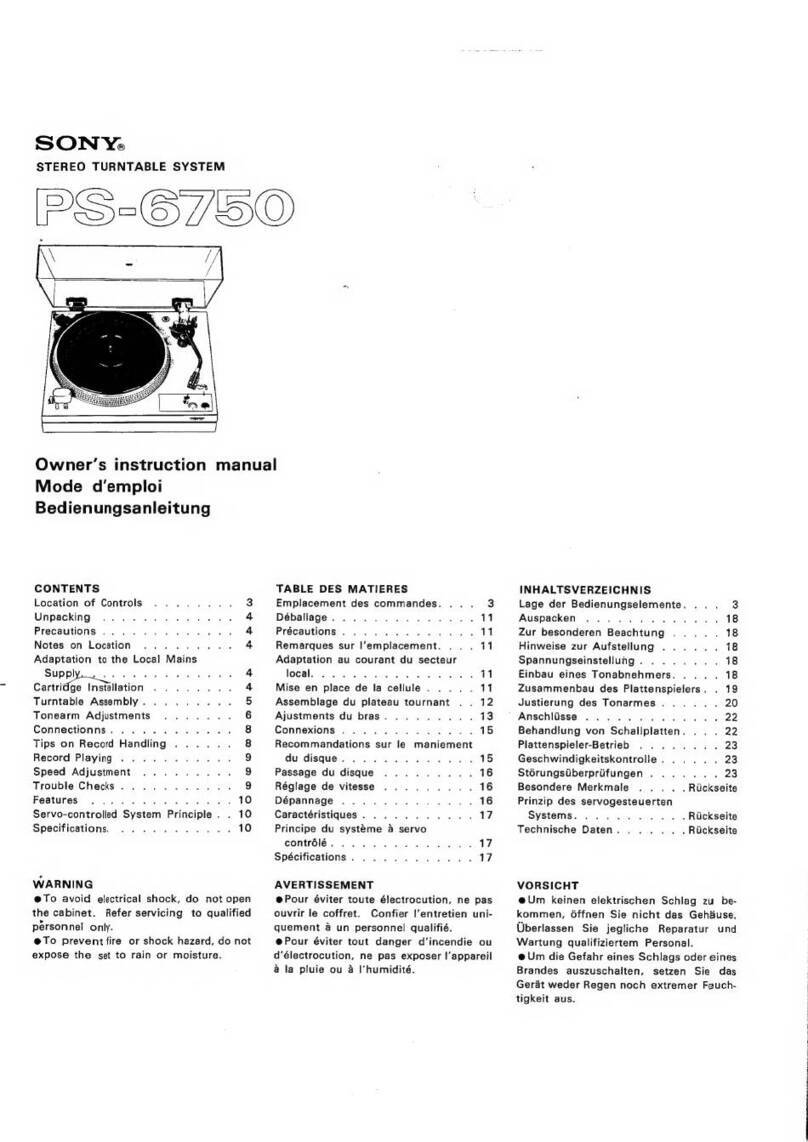
Sony
Sony PS-6750 Setup guide

Sony
Sony PS-J20 User manual
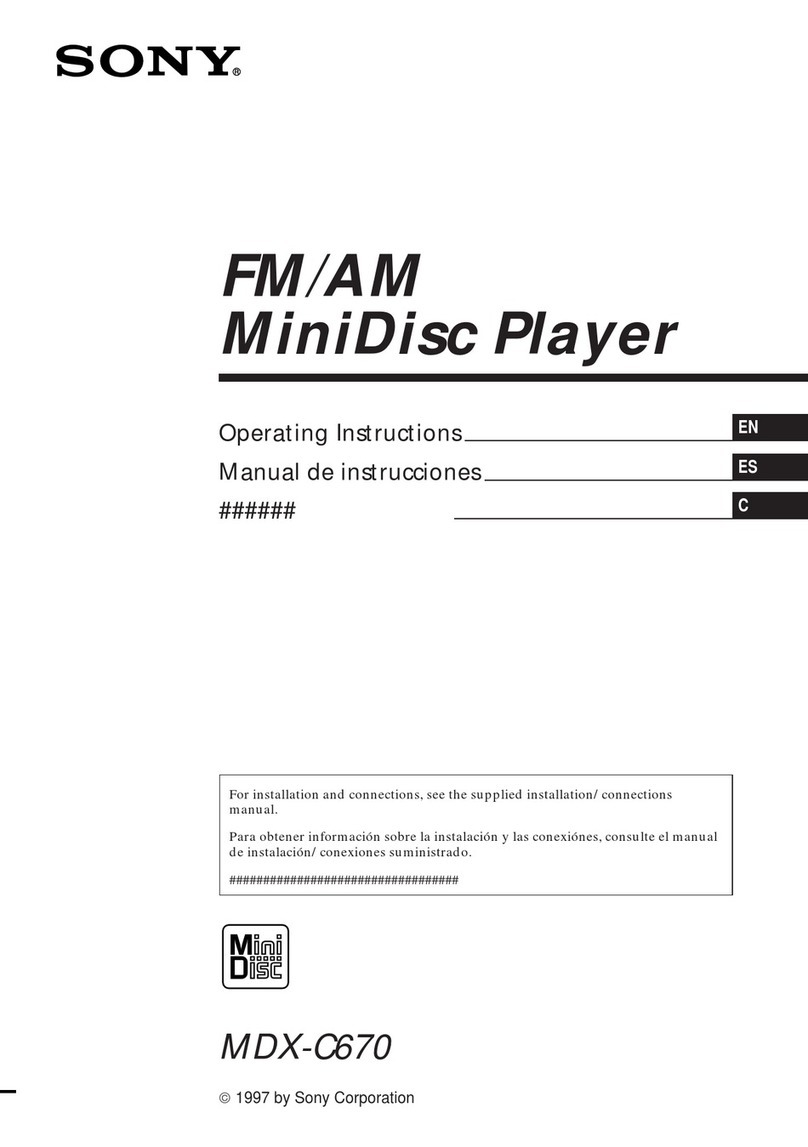
Sony
Sony MDX-C670 User manual

Sony
Sony PS-LX55C User manual

Sony
Sony NW-A45 User manual

Sony
Sony AIVA AZ-BS1 User manual

Sony
Sony PMW-PZ1 User manual

Sony
Sony PS-LX310BT User manual
